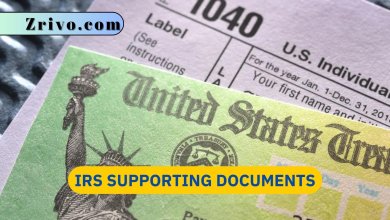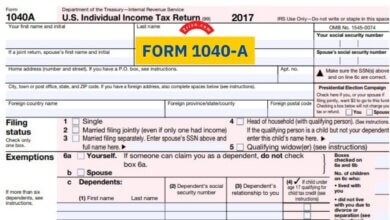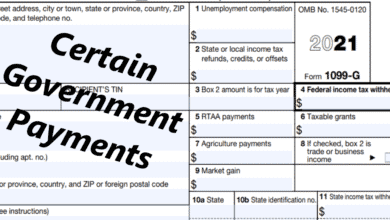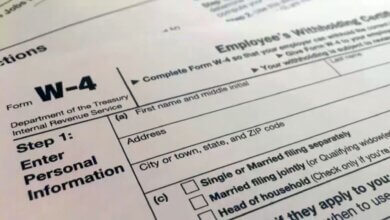8594 Instructions 2023 - 2024
Form 8594 is used to report a group of assets transferred during a trade. This article includes the introduction and instructions for Form 8594.

Contents
The basis of the assets transferred during a trade is determined by their price. The buyer and seller must fill out the form. It must include the tax year the sale occurred, the form number, and the reasons for the sale.
The IRS Form 8594 must be completed and attached to an income tax return by the buyer or seller. The buyer or seller must also update the amount allocated to the asset on his or her income tax return. Failure to file the required documents may result in penalties. Read on the article for Form 8594 Instructions.
Understanding Form 8594?
When filling out the Asset Acquisition Statement, you must include certain information. The information provided on the form will be used for tax purposes. The information you need to include in the form will vary depending on what type of assets are being acquired. For example, some assets are considered business assets, while others are personal property. In any case, you will have to fill out Form 8594 if you sell your business assets.
The time you need to spend filling out the form will depend on your circumstances. This document must be filled out by a self-employed individual. However, hiring someone to prepare the tax forms for you is possible. Fiverr is a site that offers tax preparation services.
The time it takes to complete and file Form 8594 will depend on the taxpayer’s circumstances. In general, an individual taxpayer will spend about an hour to fill out the form. In addition, an estimated burden for all other taxpayers has been approved by the OMB under control number 1545-0074. If you have any questions regarding this form, you should contact the IRS. Their contact information is listed on the instructions included with your tax return.
Form 8594 Asset Classes
- Class I assets: Cash and general deposit accounts other than certificates of deposit held in banks, savings and loan associations, and other depository institutions. ( savings and checking accounts also included )
- Class II assets: are actively traded personal property within the meaning of section 1092(d)(1) and Regulations section 1.1092(d)-1 (determined without regard to section 1092(d)(3)
- Class III assets: Assets that the taxpayer marks to market at least annually for federal income tax purposes and debt instruments (including accounts receivable)
- Class IV assets: These assets are stock in trade of the taxpayer or other property of a kind that would properly be included in the inventory of the taxpayer if on hand at the close of the tax year or property held by the taxpayer primarily for sale to customers in the ordinary course of its trade or business.
- Class V assets: What does not belong to previous classes are considered Class V assets. Furniture and fixtures, buildings, land, vehicles, and equipment that constitute all or part of a trade or business are Class V assets.
- Class VI assets are all section 197 intangibles except goodwill and going concern value ( Check the IRS’s Instructions for Form 8594 for detailed instructions. )
- Class VII assets: are goodwill and going concern value (whether or not the goodwill or going concern value qualifies as a section 197 intangible).
How to Fill Out Form 8594?
Are you troubled with filling out Form 8594 on your own? Here are the step-by-step instructions on how to fill out Form 8594:
- Enter the name, address, and TIN of the other party to the transaction
- Enter the date on which the sale of the assets took place
- Enter the total consideration transferred for the assets.
- For a particular class of assets, enter the total fair market value of all the assets in the class and the total allocation of the sales price. For Classes VI and VII, enter the total fair market value of Class VI and Class VII combined and the total portion of the sales price allocated to Class VI and Class VII combined.
- This line must be completed by the purchaser and the seller. To determine the maximum consideration to be paid, assuming that any contingencies specified in the agreement are met and that the consideration paid is the highest amount possible.
Form 8594, Asset Acquisition Statement is an IRS tax form that reports a group of assets that makes up a trade or business. However, not all sales and purchases of a group of assets are reported using Form 8594. Sellers and purchasers are both required to file this tax form if goodwill or going concern value attaches or could attach, to the success of the assets, and the purchaser’s basis in the assets is determined only by the amount paid for the assets.
Here are the step-by-step instructions to file Form 8594 for the 2023 - 2024 taxes.
Part 1 of 8594 Form 2024
Enter the general information and state whether you’re the seller or the purchaser. You’ll only need to enter basic information on Part 1, such as your name, other party’s identifying number, date of sale, and total sales price.
Part 2 of 8594 Form 2024
You will follow up with the aggregate fair market value and the allocation of the sales price on Part 2. Then, state whether:
- the purchaser and seller provide for an allocation of the sales price in the sales contract or another written document signed by both parties and; if yes,
- state whether aggregate fair market values are listed for each asset on the agreed document(s).
- the purchaser purchased a license or covenant not to complete, or enter into a lease agreement, employment contract, management contract, or similar arrangement with the seller. If yes, attach the relevant document(s).
Part 3 of 8594 Form 2024
The Part 3 is only completed by purchasers and sellers amending an original statement or previously filed supplemental statement due to an increase or decrease in consideration.





